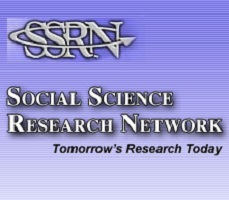دانلود رایگان ترجمه مقاله مواجهه سرب در حاملگی و استدلالی برای غربال گری معمولی – NCBI 2001
دانلود رایگان مقاله انگلیسی مواجهه سرب در زمان بارداری: مرور منابع و استدلالی برای غربال گری معمولی به همراه ترجمه فارسی
| عنوان فارسی مقاله | مواجهه سرب در زمان بارداری: مرور منابع و استدلالی برای غربال گری معمولی |
| عنوان انگلیسی مقاله | Lead Exposure in Pregnancy: A Review of the Literature and Argument for Routine Prenatal Screening |
| رشته های مرتبط | پزشکی، مامایی و جراحی زنان و زایمان |
| فرمت مقالات رایگان | مقالات انگلیسی و ترجمه های فارسی رایگان با فرمت PDF آماده دانلود رایگان میباشند |
| کیفیت ترجمه | کیفیت ترجمه این مقاله متوسط میباشد |
| توضیحات | ترجمه این مقاله به صورت خلاصه و ناقص انجام شده است. |
| نشریه | NCBI |
| مجله | بررسی مامایی و زنان و زایمان – Obstetrical & Gynecological Survey |
| سال انتشار | ۲۰۰۱ |
| کد محصول | F775 |
|
مقاله انگلیسی رایگان |
دانلود رایگان مقاله انگلیسی |
|
ترجمه فارسی رایگان |
دانلود رایگان ترجمه مقاله |
| جستجوی ترجمه مقالات | جستجوی ترجمه مقالات پزشکی |
|
فهرست مقاله: چکیده |
|
بخشی از ترجمه فارسی مقاله: چکیده |
|
بخشی از مقاله انگلیسی: Despite a steady decline in average blood lead levels in the U.S. population, approximately 0.5% of women of childbearing age may have blood levels exceeding 10 mg/dl. Strong correlations between maternal and umbilical cord blood lead levels demonstrate that lead is transferred from the mother to the fetus. High lead levels are known to cause neurobehavioral effects in infants and children, and the cumulative effects of low levels of lead exposure in utero and after birth can have similar detrimental effects. Modern sources of exposure include occupational exposure during automotive or aircraft paint manufacturing, lead production or smeltering, exposure to stained glass soder, and environmental exposure during home renovation. Prenatal screening for lead exposure may include use of a five-item questionnaire similar to the pediatric questionnaire. Management of prenatal lead exposure focuses on removal of the lead source. Rarely, highly toxic chelation therapy is needed for maternal indications. Recognition and removal of lead sources during the prenatal period can prevent maternal and neonatal morbidity. In 1991, the Centers for Disease Control and Prevention (CDC) recommended universal screening of blood lead levels in children at the ages of 6 months and 2 years. This recommendation was amended in 1997 to selective screening of children found to be at high risk for exposure based on zip code or screening questionnaire. Levels .10 mg/dl are regarded as abnormal and require action (1). Pregnant women often have exposures similar to those of young children, and lead exposure may affect the fetus in a number of detrimental ways. Furthermore, prenatal identification of lead-exposed women would allow for removal of the source and thereby provide a lead-free environment for the newborn and siblings. Several states, such as New York, require that obstetricians provide anticipatory guidance regarding potential sources of lead exposure to pregnant patients and identify high-risk women by using a screening questionnaire (2). This article provides background information regarding lead poisoning in pregnancy and specifically addresses the toxicokinetics of lead, transplacental transport of lead, sources of exposure, the basis for current guidelines regarding safe levels of exposure, and the epidemiology of exposure. This information is necessary to adequately assess exposure risk for a patient and forms the foundation for anticipatory guidance. The major focus of the article will then turn to the effects of low-level lead exposure in utero. This information will be useful to determine whether prenatal screening is warranted and, if it is warranted, what the maternal blood lead level of concern should be. Furthermore, this information can be used to educate the lead-exposed mother regarding the risk to her fetus. BACKGROUND INFORMATION Although lead is a useful metal outside the human body, it serves no purpose within the body. Contrary to popular belief, ingestion of lead-laden paint chips is not the only method of intoxication. Airborne particles released as industrial by-products or from lead-contaminated soil are frequent vehicles of lead poisoning. Large particles such as those from smelter emissions deposit in the upper respiratory tract. Via mucociliary action, these particles are transported to the buccal cavity and swallowed. Absorption then occurs within the gastrointestinal tract. Small particles, which are most frequent in urban aerosols, can be absorbed directly in the lung. Once in the blood stream, lead binds directly to erythrocytes and can accumulate in the renal tubules and hepatocytes. Eventually, the majority of lead will be deposited in bone and teeth. Ninety-five percent of the total body burden is stored in bone. The half-life of lead is 1 to 2 months in blood and 20 to 30 years in bone. Blood lead levels reflect the active, toxic fraction and suggest acute intoxication (3). A woman of childbearing age with high blood lead levels is at risk of transmitting that level to her fetus. Lead crosses the placenta throughout gestation (3). The correlation between maternal and umbilical cord blood lead levels ranges from 0.55 to 0.92 (4). These findings suggest that lead freely crosses the placenta (5–۷). The concentration of lead was found to be higher in amniotic fluid than in cord blood in one study that compared maternal blood, cord blood, and amniotic fluid lead levels in 19 women at delivery. These data suggest that fetal membranes, which showed high concentrations of lead, may participate in the elimination of this toxic metal by absorbing lead from the amniotic fluid (8). Fetal lead uptake is constant and cumulative until birth (9). Lead is stored mainly in bone, blood, and liver in the fetus (10). Because lead is readily transmitted from mother to fetus via the placenta, maternal exposure must be reduced to protect the fetus. Therefore, information regarding the environmental sources of lead is important. The Motherisk Program in Canada examined the three most common occupational exposures reported by pregnant women. After radiation and organic solvents, lead exposure was most often reported. Specifically, the vast majority of lead exposures occurred among artists who used stained glass or workers involved in paint manufacturing for the automotive and aircraft industries (11). Rempel (12) examined occupational lead exposure in the entire population and found that the following occupations put employees and their families at risk of lead exposure: lead production or smeltering, production of illicit whiskey, brass, copper, and lead foundry work, radiator repair, scrap handling, sanding old paint, lead soldering, cable stripping, instructor or janitor at a firing range, demolition of ships and bridges, battery manufacturer, machining or grinding lead alloys, welding of old painted metals, thermal paint stripping of old buildings, and ceramic glaze mixing. Indirect maternal exposure can occur when a worker brings lead dust home on clothing, skin, and hair. Therefore, paternal employment in the lead industry must be regarded as an indirect risk to the fetus (13, 14). Nonoccupational exposure to lead is also significant. A common source of childhood plumbism is lead-based paint. Before 1955, white house paint could consist of up to 50% based, and 70% of houses built before 1960 contained lead-based paint. Finally, in 1977, lead levels in indoor paint dropped to 0.06%. The latest cases of plumbism derive from young families who are renovating older homes. Such renovations release lead dust into the dwelling and surrounding ground (15). Therefore, pregnant women living in homes built before 1977 undergoing renovation are thought to be at risk for lead exposure. Also, because lead is nonbiodegradable, it accumulates in soil and dust particularly near highly industrialized areas. For example, a survey of backyards on Staten Island downwind from a secondary smelter in Cartaret, NY revealed lead levels of 1000 to 4000 ppm (16). This finding emphasizes that persons who live near smelters and highly industrialized areas are at risk for significant lead exposure. Unfortunately, water, food, and common home remedies are also potential sources of lead intoxication. Water accounts for approximately 20% of exposures. Acidic “soft” water may leach lead from lead pipes installed in the 1920s. These pipes are still found in older homes and buildings (15). Newer pipes continue to contain a small amount of lead that can allow lead exposure particularly with first draw or intermittent use (16). To reduce exposure via tap water, the 1992 Environmental Protection Agency guidelines for household tap water called for a reduction in lead levels from 50 ppm to 15 mg/liter (15). Acidic food such as orange juice that is stored in lead-soldered cans, antique pewter, and ceramic pottery containers may leach lead into the beverage. The U.S. Standard Compliance Policy Guide 1988 sets limits for the amount of lead that may leach from ceramic foodware. However, uninspected foreign foodware may exceed these levels and, therefore, should be avoided (15). Ethnic home remedies can also be a significant source of lead exposure. Azarcon and greta are brightly colored powders made of 100% lead that are used in the Hispanic community to treat children with gastrointestinal distress. Payloo-ah is a red or orange powder used in the Hmong community to cure childhood rashes or fever. Ghagard, Bala Goli, and Kandu are Asian Indian remedies used for stomach ailments. Kohl or surma are used by Arab communities for cosmetic and medicinal purposes. All of these agents contain significant amounts of lead (17). The ubiquitous presence of lead in our environment suggests that much of the population is exposed to some amount of lead. To assess the number of clinically significant exposures that occur in pregnant women, a threshold blood lead level must be defined. In 1988, the U.S. Public Health Service Report to the U.S. Congress acknowledged no safe level of lead, but for practical purposes recommended a critical level reduction from 25 mg/dl to 10 mg/dl in children and women of childbearing age (18). In 1991, the Centers for Disease Control followed suit and adopted a blood lead level of 10 mg/dl as the threshold for concern (19). With an established benchmark of 10 mg/dl, it becomes possible to assess the size of the population that is at risk and thus the magnitude of the problem of lead poisoning. In 1990, a congressionally mandated study was conducted by the U.S. Agency for Toxic Substances and Disease Registry to estimate the number of American women of childbearing age and the number of American pregnant women whose lead exposure was significant enough to pose a risk of intrauterine toxicity. This risk was determined to exist at blood lead levels .10 mg/dl. The study generated projected 1984 prevalence rates of elevated lead levels in white and black women of childbearing age in two groups: ages 15 to 19 years and 20 to 40 years. A total of 9.2% of white women aged 15 to 19 years and 9.7% of white women aged 20 to 40 years had lead levels .10 mg/dl. Of black women, 8.2% of 15 to 19 year olds and 19.7% of 20 to 40 year olds had lead levels .10 mg/dl. Applying these percentages to standard metropolitan statistical areas, 4.4 million U.S. women of childbearing age were estimated to have blood lead levels .10 mg/dl. Furthermore, 403,200 pregnant women were estimated to have blood lead levels .10 mg/dl. Thus, during 10 years, 4 million fetuses would be at an increased risk from lead exposure (20). Despite a steady decline in average blood lead levels in the U.S. population in recent years, approximately 0.5% of women of childbearing age may have blood lead levels .10 mg/dl according to the Third National Health and Nutrition Examination Survey (1988–۱۹۹۱) (۲۱). Thus, a significant number of pregnant and potentially childbearing women are at risk for high-dose lead exposure. Although a blood lead level of 10 mg/dl is now regarded as “high risk” for fetal health effects, this level is low compared with levels studied 20 years ago. In 1976, Rom (22) reviewed the literature regarding high-dose effects and concluded that occupational exposure of women and men to high lead levels impaired fertility and increased the risk of spontaneous abortion. Increasing awareness of the environmental risk factors for lead exposure, banning of leaded gasoline and lead-based house paint, and stricter tap water guidelines have led to a decrease in exposure risk. Many studies performed before 1991 studied the effects of blood lead levels of ,25 mg/dl as “low dose.” Once 10 mg/dl was adopted as the threshold for concern in 1991, studies began to focus on the adverse effects of even lower lead levels (16). An interesting and divided body of information has grown regarding adverse effects of in utero exposure to low lead levels, loosely defined for the purposes of this article as a blood lead level ,10 mg/dl. |



